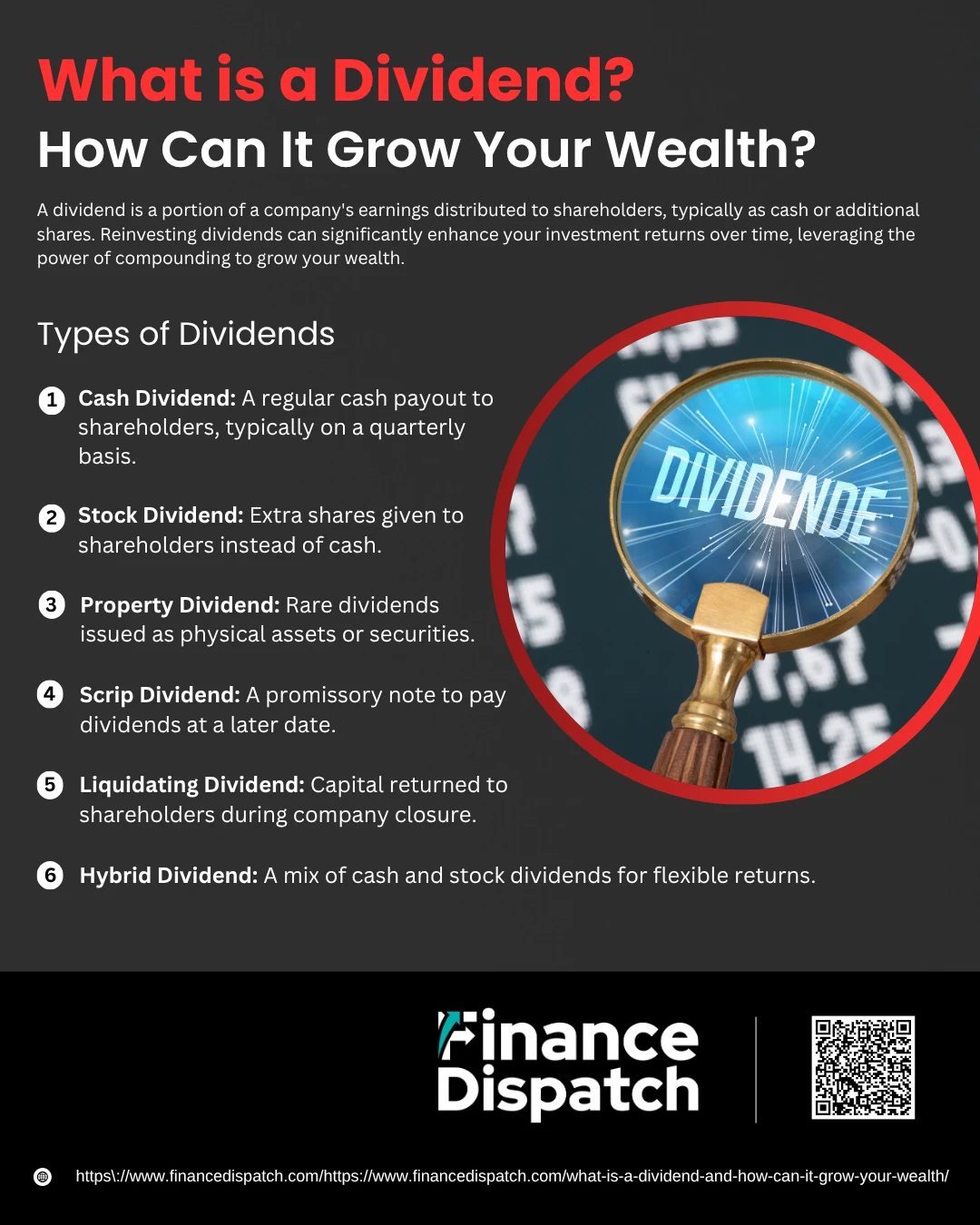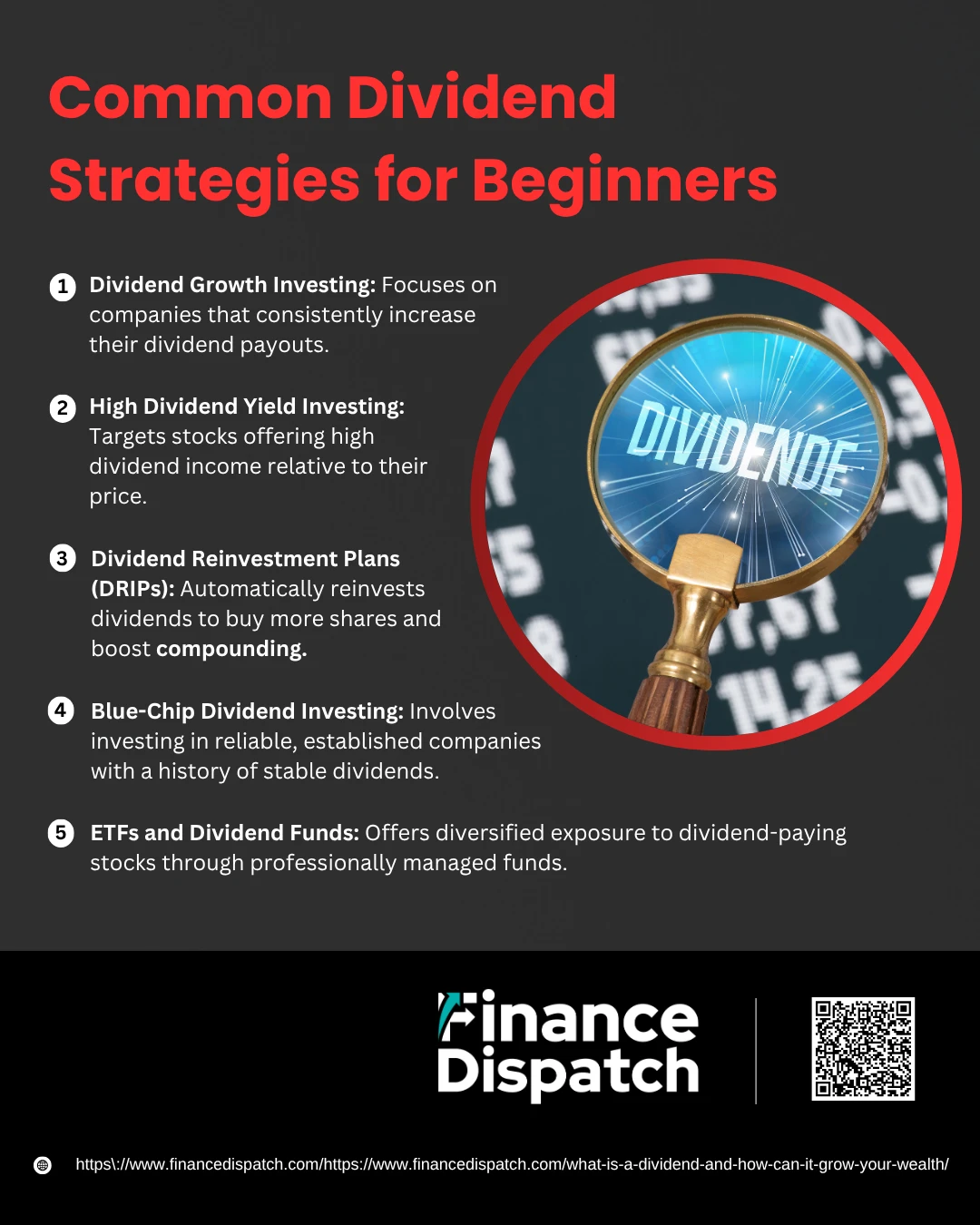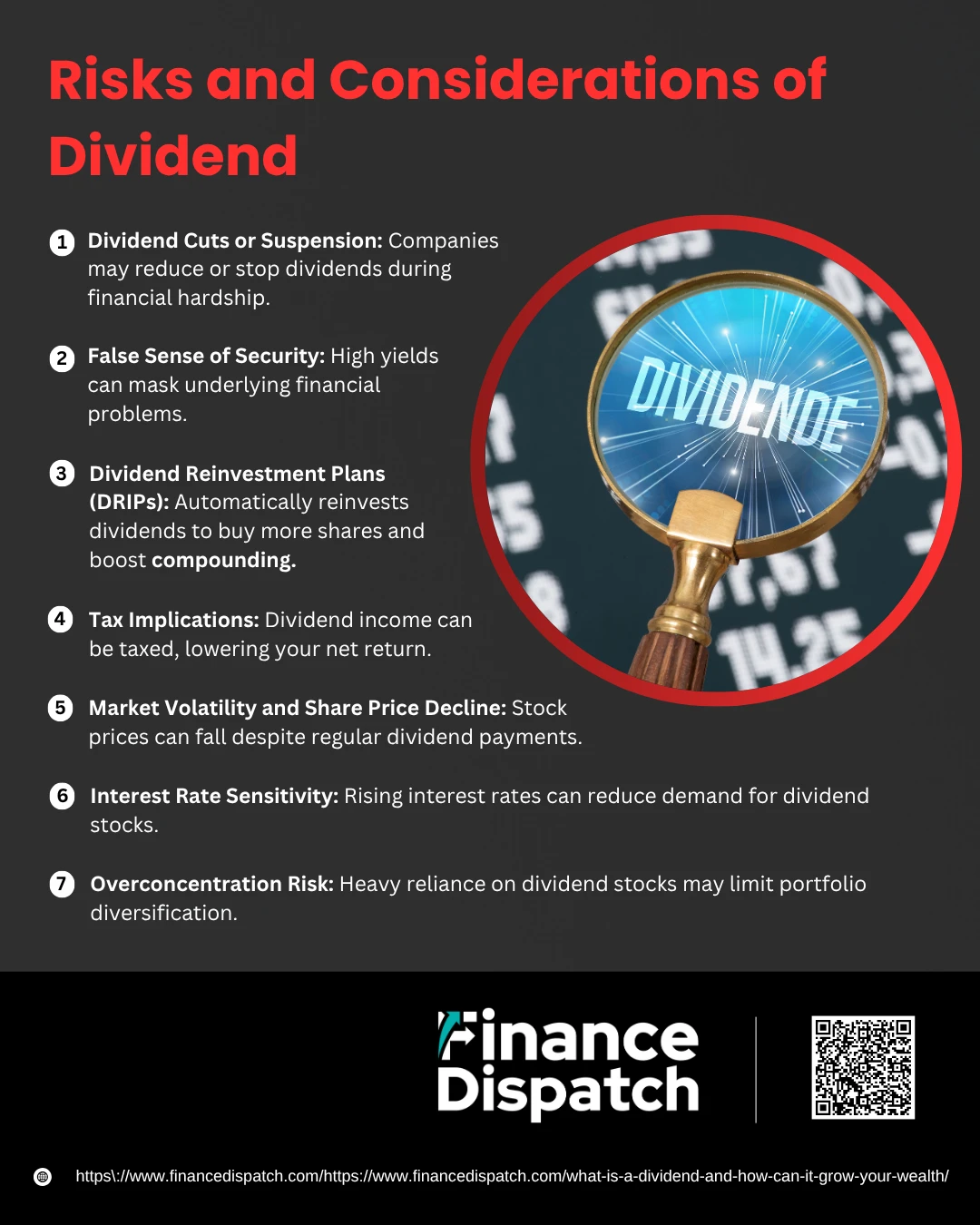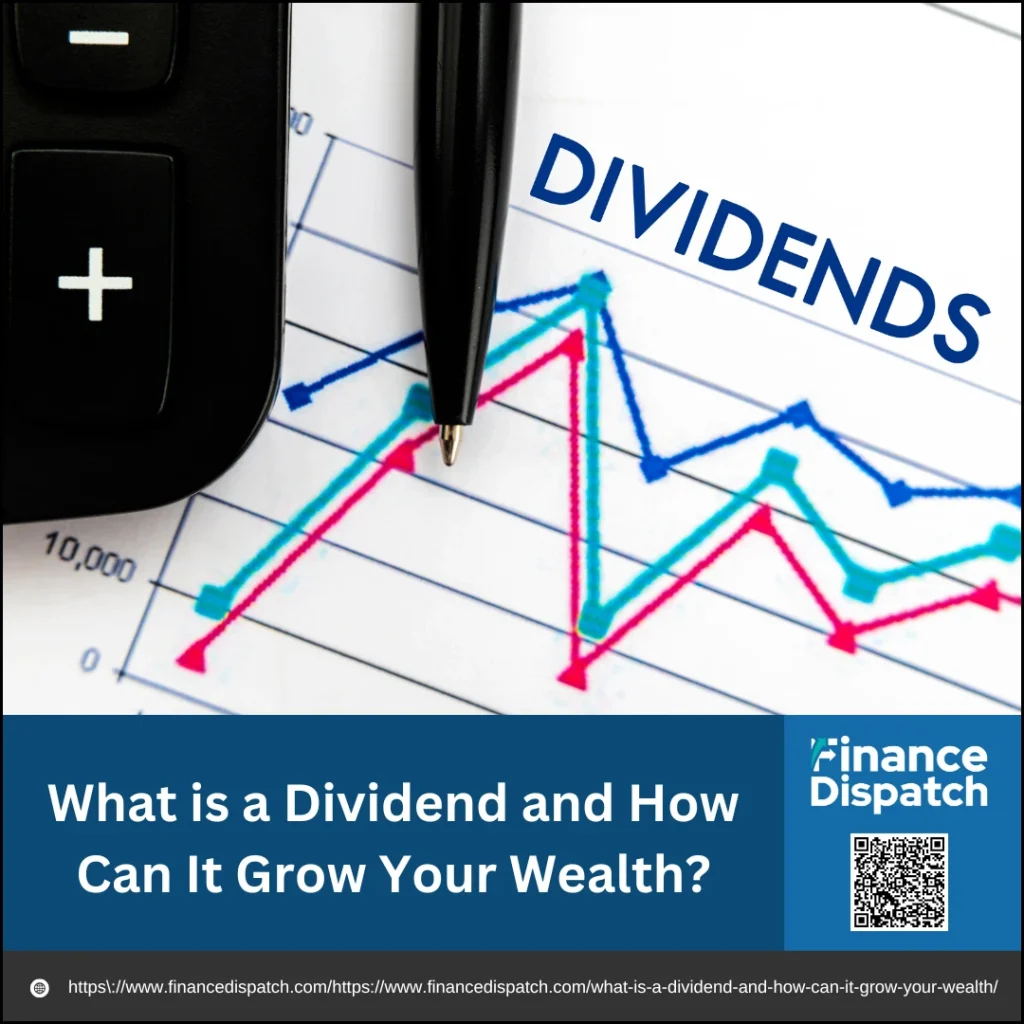A dividend is a portion of a company’s earnings distributed to shareholders as a reward for their investment. Far from being just an added perk, dividends are a reliable source of passive income that can significantly contribute to building long-term wealth. By reinvesting dividends or selecting stocks with consistent payouts, investors can harness the power of compounding and steady cash flow to strengthen their financial future.
What is a Dividend?
A dividend is a payment made by a company to its shareholders, representing a share of the company’s profits. Typically authorized by the board of directors, dividends are issued in cash or additional shares and serve as a tangible reward for holding the company’s stock. While not all companies pay dividends—especially younger firms focused on growth—those that do often signal financial stability and a commitment to shareholder value. Dividends can be distributed on a regular schedule, such as quarterly or annually, and are a key component of many income-focused investment strategies.
 Types of Dividends
Types of Dividends
Dividends aren’t one-size-fits-all. Depending on a company’s financial condition, goals, and shareholder strategy, dividends may be distributed in several different forms. Each type serves a distinct purpose and carries different implications for investors—ranging from immediate income to long-term equity growth. Below is a breakdown of the main types of dividends investors may encounter:
1. Cash Dividend
This is the most traditional and widely issued type of dividend. Shareholders receive a specified amount of money per share, usually transferred directly into their brokerage or bank accounts. These are typically paid on a quarterly basis and are favored by income-seeking investors.
2. Stock Dividend
Instead of paying cash, the company distributes additional shares of its stock to existing shareholders. This increases the number of shares an investor owns without requiring them to purchase more. Stock dividends are often used when a company wants to reward investors but retain cash for growth or operations.
3. Property Dividend
In rare cases, companies may issue dividends in the form of physical assets such as real estate, inventory, or securities from a subsidiary. Property dividends are complex and often used during restructuring or asset spin-offs.
4. Scrip Dividend
This type involves the company issuing a promissory note to shareholders, indicating a commitment to pay a dividend at a future date. It’s generally used when a company wants to declare a dividend but doesn’t currently have the liquidity to pay in cash.
5. Liquidating Dividend
Unlike regular dividends, liquidating dividends occur when a company is winding down operations or returning capital to shareholders. These payments are not made from profits but from the company’s original capital base.
6. Hybrid Dividend
A combination of both cash and stock dividends, hybrid dividends allow companies to conserve cash while still providing immediate value to shareholders. This approach offers a balanced reward of liquidity and ownership growth.
How Dividends Work
Dividends are not distributed at random—they follow a structured and well-defined process that ensures transparency and fairness for investors. When a company earns profits, it can choose to reinvest the earnings back into the business or share a portion with its shareholders in the form of dividends. The decision to pay a dividend involves several important dates that determine who qualifies for the payout and when it will be received. Here’s a closer look at each step in the dividend payment cycle:
1. Declaration Date
This is the official date when the company’s board of directors announces that a dividend will be paid. Along with this declaration, the company specifies the amount of the dividend per share, the record date, and the payment date. The declaration signals the company’s intent and commitment to reward shareholders.
2. Ex-Dividend Date
Also known as the “ex-date,” this is one of the most critical dates for investors. To be eligible for the upcoming dividend, you must own the stock before the ex-dividend date. If you purchase the stock on or after this date, you will not receive the dividend. This date typically falls one business day before the record date.
3. Record Date
On this date, the company checks its records to identify which shareholders are entitled to receive the dividend. Only those who are listed as shareholders by the record date—typically one business day after the ex-dividend date—will receive the payment.
4. Payment Date
This is when the dividend is actually distributed. Shareholders who were on record as of the record date will receive their payments on this date, either as cash deposited to their brokerage accounts or as additional shares if it’s a stock dividend.
Why Dividends Matter for Investors
Dividends play a vital role in many investors’ strategies, offering a reliable source of income regardless of market fluctuations. For long-term investors, especially those seeking passive income or stability during volatile times, dividends provide financial reassurance and a tangible return on investment. They can also serve as a signal of a company’s financial health, with consistent or growing dividend payments reflecting profitability and sound management. Furthermore, reinvesting dividends can accelerate portfolio growth through the power of compounding. Unlike capital gains, which depend on market timing and price appreciation, dividends offer steady returns that can support income goals or be reinvested for long-term wealth building.
Ways Dividends Can Grow Your Wealth
Dividends are more than just a payout—they’re a powerful tool for long-term wealth accumulation. Whether you use them as a source of steady income or reinvest them to harness compounding growth, dividends can significantly boost your overall returns. When chosen wisely, dividend-paying investments offer a combination of income stability, growth potential, and risk management, making them a valuable part of any well-rounded portfolio.
| Strategy | How It Grows Wealth |
| Reinvestment (DRIP) | Automatically buys more shares, compounding returns over time without additional capital. |
| Passive Income Generation | Provides a consistent income stream that can be used for expenses or reinvestment. |
| Dividend Growth Investing | Focuses on companies that increase dividends over time, boosting future income. |
| Total Return Enhancement | Combines capital gains with dividends to increase overall investment returns. |
| Lower Portfolio Volatility | Dividend-paying stocks tend to be more stable, reducing losses during market downturns. |
| Tax-Advantaged Returns | In some regions, dividends are taxed at lower rates than regular income, increasing net gains. |
Factors That Affect Dividend Payments
Dividend payments are influenced by a variety of internal and external factors that shape a company’s financial decisions. While some companies prioritize consistent payouts to attract investors, others may adjust or withhold dividends based on their strategic goals or market conditions. Understanding these factors helps investors assess the reliability and sustainability of dividend income.
1. Profitability: Companies with strong, consistent profits are more likely to issue regular and growing dividends.
2. Cash Flow: Even profitable companies need sufficient cash on hand to make dividend payments; tight liquidity may delay or reduce payouts.
3. Debt Levels: Firms with high debt obligations might prioritize debt repayment over dividend distribution to maintain financial health.
4. Growth Opportunities: Companies focused on expansion may retain earnings to fund new projects rather than distributing them as dividends.
5. Industry Norms: Dividend practices vary by sector; utilities often pay stable dividends, while tech firms may reinvest profits for growth.
6. Tax Policies: Corporate and shareholder tax laws in different jurisdictions can influence how and when dividends are paid.
7. Dividend Policy: Some companies follow a residual, stable, or hybrid dividend policy that guides how earnings are allocated to shareholders.
 Common Dividend Strategies for Beginners
Common Dividend Strategies for Beginners
Dividend investing is a great starting point for beginners who want to grow their wealth while earning regular income. These strategies are typically less volatile than high-growth stock trading and can provide steady returns over time. With a focus on stability, consistency, and compounding, dividend strategies help investors build financial discipline and long-term investment habits. Below are some beginner-friendly approaches to consider when entering the world of dividend investing:
1. Dividend Growth Investing
This strategy targets companies that not only pay dividends but also increase them consistently year after year. Such companies often demonstrate strong financial health and disciplined management. As dividends grow, so does your income stream—offering a built-in hedge against inflation.
2. High Dividend Yield Investing
Beginners may be drawn to stocks with high dividend yields, which provide a larger income relative to the stock’s price. While attractive, it’s important to assess whether the company can sustain such payouts. High yield may sometimes be a sign of financial distress.
3. Dividend Reinvestment Plans (DRIPs)
DRIPs allow investors to automatically reinvest their dividend payouts into additional shares of the same company. This method takes advantage of compounding and dollar-cost averaging, growing your investment steadily without requiring additional cash.
4. Blue-Chip Dividend Investing
Investing in large, established companies—like Johnson & Johnson or Procter & Gamble—offers reliability. These “blue-chip” companies often have long histories of paying and increasing dividends, making them ideal for conservative, income-focused investors.
5. ETFs and Dividend Funds
For those who prefer a hands-off approach, dividend-focused ETFs or mutual funds provide exposure to a diversified portfolio of dividend-paying companies. They reduce the risk of picking individual stocks and are managed by professionals, making them ideal for those new to investing.
 Risks and Considerations of Dividend
Risks and Considerations of Dividend
Dividend investing can be an excellent strategy for generating passive income and building long-term wealth. However, like all investment approaches, it carries its own set of risks and limitations that should not be overlooked. Many investors are drawn to the promise of regular payouts, but a short-sighted focus on dividends can lead to financial setbacks if key factors aren’t considered. Understanding these potential downsides will help you invest more wisely and avoid common traps.
1. Dividend Cuts or Suspension
Companies are not legally obligated to pay dividends. In times of financial stress—such as declining profits, economic recessions, or unexpected events—companies may reduce or eliminate their dividend payouts. This can significantly impact income-dependent investors and often results in a decline in the stock’s market price.
2. False Sense of Security
A high dividend yield can be misleading. Sometimes, it reflects a falling share price rather than strong performance. This could indicate that the company is struggling financially, and the high yield may not be sustainable. Investors should always evaluate the company’s fundamentals, not just the yield.
3. Limited Growth Potential
Companies that pay large dividends may reinvest less in their own growth. This can limit the potential for capital appreciation, meaning your investment may not grow in value as quickly as it would with growth-oriented stocks. This trade-off must be considered based on your financial goals.
4. Tax Implications
In many jurisdictions, dividend income is taxed—sometimes at a higher rate than long-term capital gains. This reduces the effective return on your investment, especially for those in higher tax brackets or without tax-sheltered accounts.
5. Market Volatility and Share Price Decline
Dividend-paying stocks are still exposed to market risks. If a company’s earnings decline or market sentiment turns negative, the share price can fall, sometimes more than the value of the dividend received. This could lead to capital losses even if income is generated.
6. Interest Rate Sensitivity
Dividend stocks, particularly in sectors like utilities or real estate, can become less attractive when interest rates rise. Investors may shift to safer, higher-yielding alternatives like bonds, causing demand for these stocks to fall and potentially driving prices down.
7. Overconcentration Risk
Relying too heavily on dividend-paying stocks for income can result in poor diversification. Many dividend stocks come from specific sectors (e.g., utilities, financials), and being overexposed to one sector increases vulnerability to industry-specific downturns.
Conclusion
Dividends are more than just extra income—they are a strategic tool for building long-term wealth and financial stability. Whether used for passive income or reinvested to harness the power of compounding, dividends can significantly enhance an investor’s overall return. However, like any investment strategy, dividend investing requires careful consideration of factors such as company performance, market conditions, and potential risks. By understanding how dividends work, the types available, and the strategies that best suit your goals, you can make informed decisions that support a strong, diversified, and income-generating portfolio.



